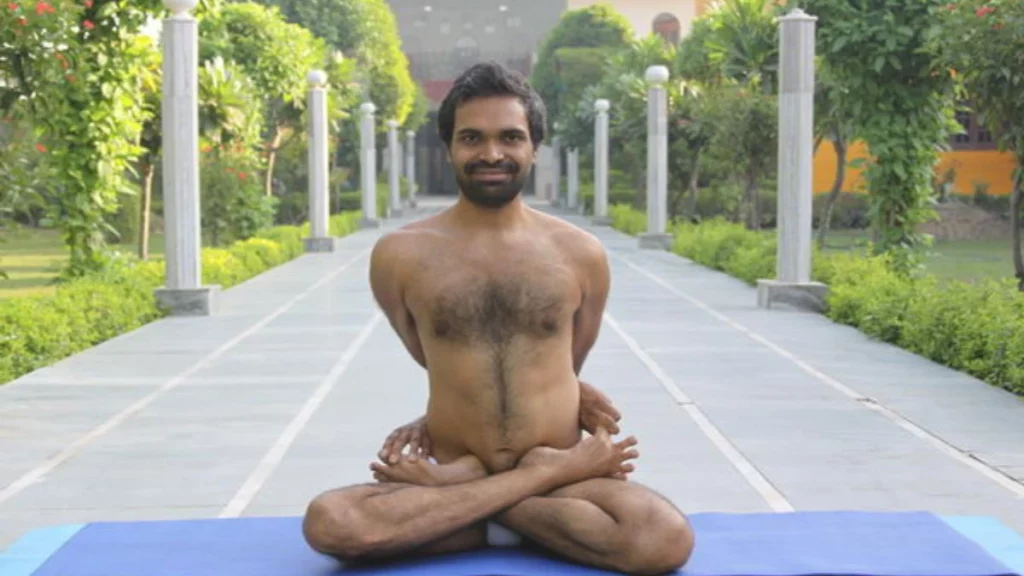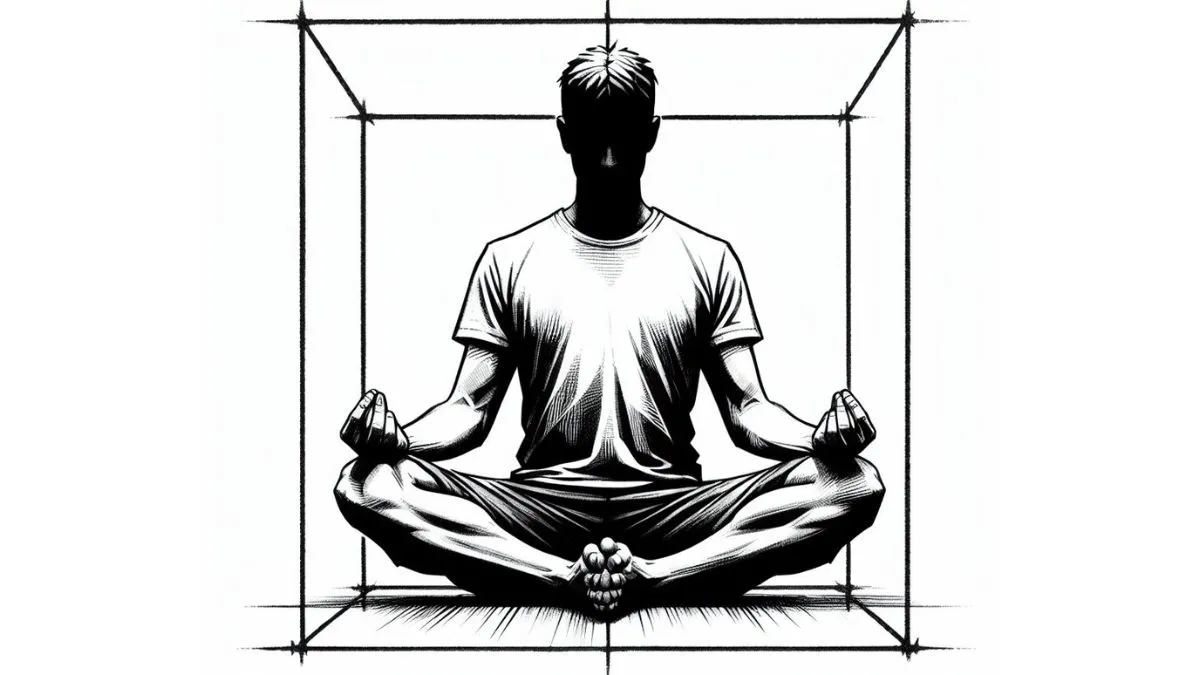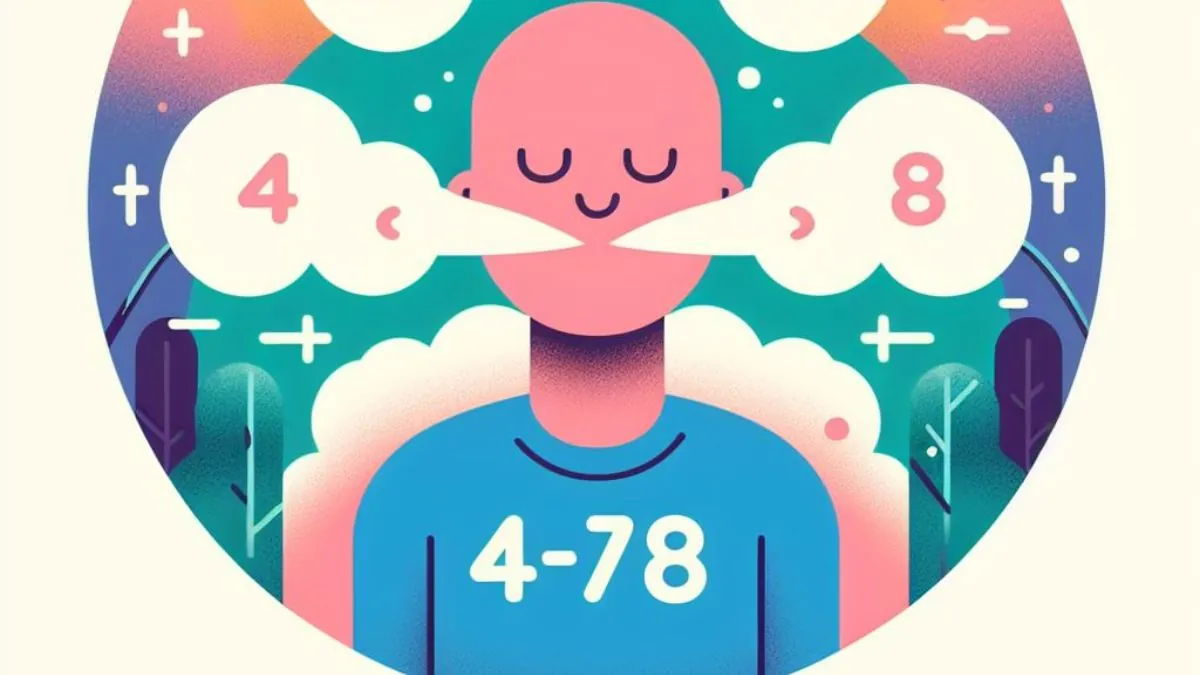Introduction
Baddha Padmasana, also known as Bound Lotus Pose, is an advanced yoga posture that combines the benefits of both Padmasana (Lotus Pose) and Baddha Konasana (Bound Angle Pose). This pose is a beautiful integration of flexibility, balance, and inner stillness. In this article, we delve into the history, significance, benefits, step-by-step guide, and precautions of practicing Baddha Padmasana.
Unraveling the Roots of Baddha Padmasana
Baddha Padmasana has its origins in classical yoga and is often mentioned in ancient yogic texts as an advanced asana. The term “Baddha Padmasana” is derived from the Sanskrit words “Baddha,” meaning bound, “Padma,” referring to Lotus, and “asana,” signifying a yoga pose. This complex posture requires both a deep understanding of the foundational poses, Padmasana and Baddha Konasana, and a dedicated practice to attain the necessary flexibility and balance.
Embracing the Significance of Bound Lotus Pose
Baddha Padmasana symbolizes a harmonious union of the lotus flower and bound angle. The lotus represents purity, spiritual growth, and enlightenment, while the bound angle symbolizes grounding and the opening of the hips and heart. Together, this pose embodies the integration of the physical and spiritual aspects of the self, promoting inner balance and tranquility.
Step-by-Step Guide to Practicing Baddha Padmasana

Follow these step-by-step instructions to explore the Bound Lotus Pose with mindfulness and care:
- Begin in a seated position, with your legs extended in front of you.
- Bend your right knee and place your right foot on your left thigh, bringing it close to your pelvis, in Padmasana.
- Now, bend your left knee and place your left foot on your right thigh, creating Padmasana with the opposite leg.
- Slide your hands through the space between your calves and thighs, clasping them together behind your back.
- If you cannot reach your hands, use a strap or hold onto opposite wrists to achieve the binding.
- Straighten your spine, lift your chest, and draw your shoulder blades toward each other.
- Gently tuck your chin to lengthen your neck, and gaze softly forward or close your eyes.
- Breathe deeply and hold the pose for a few breaths, finding a sense of grounding and equilibrium.
The Multifaceted Benefits of Baddha Padmasana
Baddha Padmasana offers an array of physical, mental, and spiritual benefits:
- a) Hip Opening: The pose deeply opens the hips and stretches the hip flexors, promoting greater flexibility in these areas.
- b) Spinal Alignment: It encourages an upright spine, improving posture and relieving back strain.
- c) Heart Opening: The binding of the hands behind the back opens the chest and shoulders, enhancing heart space and releasing tension.
- d) Concentration and Focus: The advanced nature of the pose requires concentration, fostering mental clarity and focus.
- e) Spiritual Connection: It encourages a sense of inner connection and union with the self and the divine.
Precautions and Contraindications
While Baddha Padmasana offers numerous benefits, it is essential to approach this pose mindfully and avoid practicing it if you have the following conditions:
- a) Knee or Ankle Injuries: Avoid Bound Lotus Pose if you have knee or ankle issues to prevent further strain.
- b) Hip Issues: If you experience hip discomfort or injuries, refrain from attempting this pose until you have consulted a qualified yoga instructor or healthcare professional.
Conclusion
Baddha Padmasana, the Bound Lotus Pose, exemplifies the balance between strength and flexibility, creating a profound union of the lotus and bound angle symbolism. This advanced yoga posture invites practitioners to explore the depths of their physical and spiritual selves, cultivating harmony, grounding, and inner serenity. As with all advanced asanas, it is crucial to approach Baddha Padmasana with patience, respect for your body’s limitations, and guidance from an experienced teacher. With dedicated practice and mindfulness, Bound Lotus Pose can become a gateway to a deeper understanding of the interplay between the body, mind, and spirit on the path of yoga.


